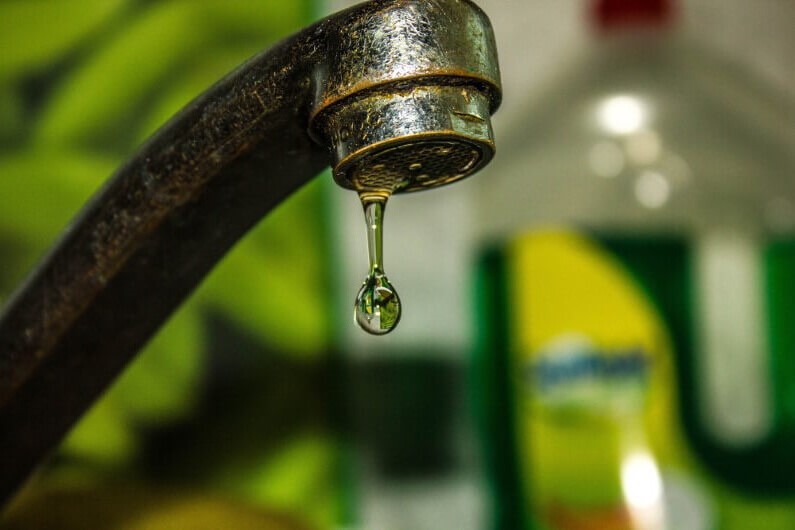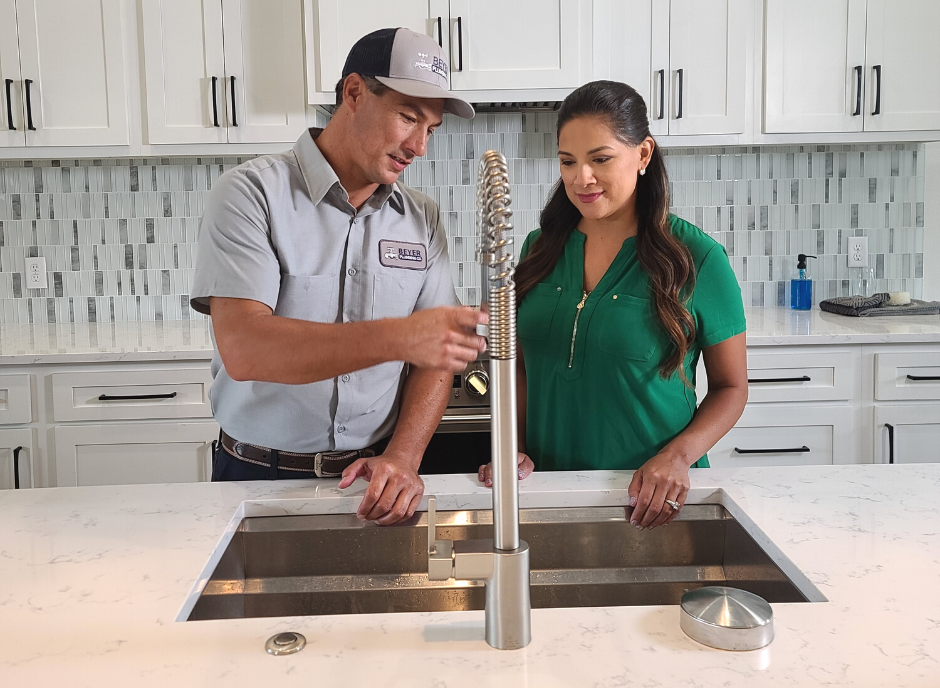Our Relevance of Correcting a Malfunctioning Faucet
Our Relevance of Correcting a Malfunctioning Faucet
Blog Article
They are making a number of great annotation related to Why It's Important to Fix Leaky Faucets overall in the content further down.

Trickling taps could seem like a minor aggravation, however their influence surpasses just the inconvenience of the audio. From drainage to incurring unnecessary monetary expenses and wellness risks, ignoring a leaking faucet can cause numerous consequences. In this short article, we'll explore why it's vital to resolve this usual household issue without delay and efficiently.
Waste of Water
Environmental Effect
Trickling faucets add considerably to water wastage. According to the Epa (EPA), a single tap leaking at one drip per second can lose more than 3,000 gallons of water each year. This not only strains water sources but also impacts ecosystems and wildlife based on them.
Financial Expenses
Raised Water Costs
Past the ecological effect, trickling taps can blow up water costs considerably. The accumulated wastefulness with time converts right into greater utility expenses, which could have been stayed clear of with prompt repair services.
Prospective Building Damages
Furthermore, prolonged trickling can cause damage to components and surfaces bordering the faucet. Water buildup can trigger discoloration, rust, and even architectural issues if left ignored, resulting in extra repair expenses.
Health Concerns
Mold And Mildew and Mold Growth
The consistent presence of wetness from a leaking faucet produces a suitable atmosphere for mold and mildew development. These fungis not just jeopardize indoor air quality yet additionally present health and wellness risks, specifically for people with breathing conditions or allergic reactions.
Waterborne Illness
Stationary water in dripping taps can become a breeding place for germs and other pathogens, boosting the risk of waterborne diseases. Pollutants such as Legionella germs grow in stationary water, potentially leading to severe health problems when consumed or breathed in.
Do it yourself vs. Specialist Repair service
Benefits and drawbacks of DIY Repair
While some might attempt to take care of a dripping tap themselves, DIY repairs include their own set of obstacles. Without proper expertise and tools, DIY efforts can aggravate the issue or cause insufficient repair work, prolonging the issue.
Advantages of Working With a Professional Plumber
Hiring an expert plumber makes sure that the underlying source of the trickling tap is addressed effectively. Plumbing technicians have the proficiency and equipment to diagnose and repair tap concerns effectively, saving time and reducing the risk of more damages.
Step-by-Step Guide to Repairing a Dripping Tap
Tools Called for
Prior to attempting to take care of a trickling tap, collect the required tools, including an adjustable wrench, screwdrivers, replacement components (such as washers or cartridges), and plumber's tape.
Usual Faucet Issues and Their Solutions
Recognize the type of tap and the specific problem creating the drip. Common issues consist of damaged washers, corroded shutoff seats, or damaged O-rings. Describe supplier instructions or on the internet tutorials for detailed advice on repairs.
Safety nets
Normal Upkeep Tips
To prevent dripping faucets, perform routine maintenance such as cleaning aerators, inspecting for leaks, and changing damaged parts immediately. Furthermore, take into consideration mounting water-saving tools or updating to extra reliable components.
Relevance of Prompt Services
Resolving trickling taps as soon as they're observed avoids further water wastefulness and possible damage, ultimately conserving both water and money in the long run.
Influence On Property Worth
Understanding of Well-Maintained Property
Preserving a home in good condition, consisting of dealing with upkeep issues like leaking taps, enhances its viewed worth and value amongst possible buyers or occupants.
Influence on Resale Worth
Properties with well-kept plumbing components, consisting of taps, command greater resale values in the real estate market. Dealing with leaking taps can add to a favorable impression during home assessments and settlements.
Ecological Obligation
Private Contribution to Conservation
Taking obligation for repairing leaking faucets aligns with broader efforts toward water conservation and environmental sustainability. Every person's activities jointly make a considerable effect on protecting precious sources.
Lasting Living Practices
By prioritizing prompt fixings and embracing water-saving practices, individuals add to lasting living methods that benefit both existing and future generations.
Final thought
Addressing a leaking faucet surpasses mere ease; it's a crucial action towards conserving water, decreasing economic costs, and guarding wellness and building. Whether with do it yourself repair services or specialist assistance, doing something about it to fix dripping taps is a little yet impactful means to promote liable stewardship of resources and contribute to a much healthier, much more lasting future.
How to Fix a Leaky Faucet: Step-by-Step Repair Guide
A leaky faucet may seem like a simple annoyance, but if it's not fixed promptly, that leak could cost hundreds to potentially thousands. From water damage to mold, mildew, and high water bills, even a tiny leak can be catastrophic if left unattended. Damage like this can even affect the overall value of your home, so it's important to take the right approach for leaky faucet repair. You may need the help of a plumber in some cases, but we've got a few tips you can try on how to fix a leaky faucet before calling the pros.
Four Faucet Types
When you're learning how to fix a leaky faucet, the first step is knowing what kind of faucet you're working with! There are four common types.
Cartridge Faucets
Cartridge faucets come in one- or two-handled varieties. In one-handled cartridge faucets, hot and cold water combines in a single cartridge. In the two-handled versions, hot and cold water are controlled separately and mixed in the faucet.
Ball Faucets
Ball faucets have a single lever you push up and down to adjust the pressure and rotate to change the temperature. A slotted metal ball controls the amount of water allowed into the spout.
Compression Washer Faucets
They're the oldest type of faucet, but they're still used in many homes — especially older ones. Compression faucets have two separate handles that, when turned, raise or lower the washer that seals a water valve. This valve stops water from flowing through the faucet when it is turned off.
Disc Faucets
Disc faucets rarely need to be repaired due to their maintenance-free design. The water flow is controlled by two discs — the upper one raises and lowers against a fixed lower disc, creating a watertight seal. If your disc faucet starts leaking, you may need to replace the seals or clean residue buildup from the inlets.
Fixing a Leaky Faucet
Step 1: Turn Off the Water
Whether you're learning how to fix a leaky bathtub faucet or how to fix a leaky kitchen faucet, always turn off the water supply to your working area when you're fixing a leak. The last thing you want is a flood added to your list of things to fix.
Look for the shutoff valves below your sink or around the tub and turn them clockwise to stop the water flow. If your faucet doesn't have shutoff valves, you may need to turn off the water for the whole house. Check to make sure it's off by turning the faucet on. If nothing comes out, you're ready to start the repair.
Step 2: Take Apart the Faucet
How you disassemble your faucet depends on the type of fixture you have. You can use a flathead screwdriver to remove the caps on top of the handle or handles for cartridge and compression faucets. Inside, you should see handle screws. Unscrew these with a screwdriver to remove the handle.
Disc- and ball-style faucets will typically have an inlet screw near the handle, and removing that will reveal the interior of the faucet.
Detach the Valve Stem
For cartridge- and compression-style faucets, you'll see the inner valve stem or cartridge once you remove the faucet handles. If you have a compression faucet, unscrew the brass valve stem. If you have a cartridge faucet, pull out the cartridge. If your cartridge has been in place for a while, it may require some tools or extra force to remove it due to mineral deposits.
Examine and Replace Parts
Once you've removed the parts, check them out to confirm what needs to be replaced. You may see corroded rubber washers, O-rings, stems, or cartridges. On a ball-style faucet, check the seats and springs for damage.
If you need to repair a leaky disc faucet, check the inlet and seals on the lower disc.
Once you determine what parts must be replaced, visit your local hardware store. Bring the damaged parts with you to ensure you can purchase the correct components to replace them.
Clean Valves and Faucet Cavity
If you've removed a stem or cartridge, you may notice mineral buildup in the faucet's threads. Use white vinegar to clean the valve seat by soaking it for a few minutes, then scrub it away with a soft toothbrush and rinse with warm water. You can also clean the interior of the faucet in the same way.
Reassemble the Faucet
Once your faucet is cleaned and the required parts have been replaced, it's time to reassemble it. Put the pieces back together and slowly turn the water supply back on. Doing this slowly is crucial because too much initial water pressure can damage the new hardware you've just installed.
https://homewarranty.firstam.com/blog/how-to-fix-leaky-faucet

As a devoted person who reads about Leaky Faucets: Why They Happen & What to Do About Them, I think sharing that topic was a good thing. Sharing is good. You won't know, you could be doing someone a favor. Bless you for being here. Revisit us soon.
Report this page